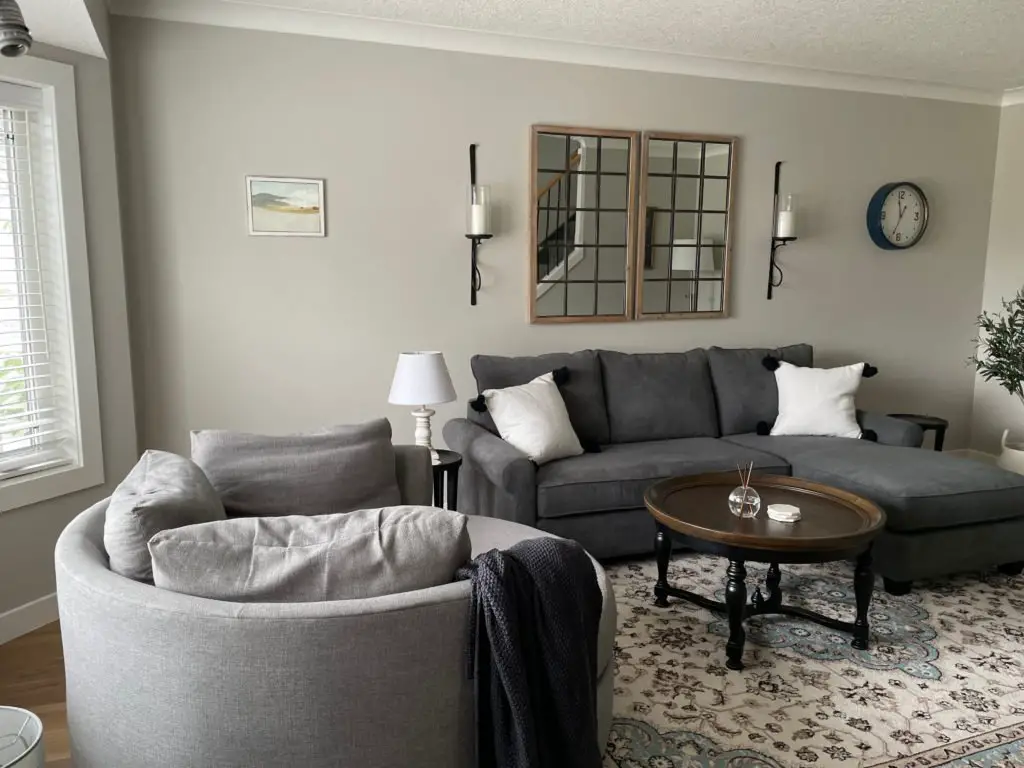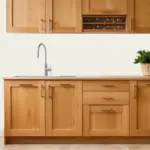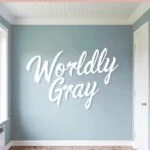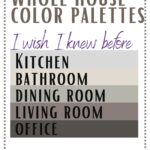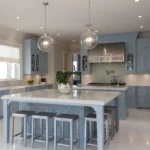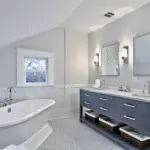The beauty of gray paint lies in its incredible versatility and its neutrality, serving as an elegant backdrop that seamlessly integrates with a myriad of home decor styles. In the realm of interior design, gray has transcended from being a nondescript hue to a dominant choice, encapsulating both modernity and timeless sophistication. Today, we’ll delve into a comparative analysis of two standout shades from Benjamin Moore: Stonington Gray and Revere Pewter. Both colors carry their own distinct personalities and characteristics, offering unique attributes that cater to various aesthetic preferences.
Overview of Stonington Gray vs. Revere Pewter
Stonington Gray and Revere Pewter represent different spectrums of the gray palette, each embodying unique features that attract homeowners time and again. Stonington Gray is recognized as a true gray, maintaining a balance without any predominant hue overwhelmingly pulling it in another chromatic direction. In contrast, Revere Pewter exhibits the quality of a warm greige—a blend of gray and beige that offers a comforting warmth.
Both colors have earned their place as popular choices for mid-toned gray paint, suitable for entire home applications. Their adaptability allows them to be implemented in varying spaces without clashing with existing decor or overwhelming the dynamics of the interior.
Light Reflectance Value (LRV) Comparison
The Light Reflectance Value, or LRV, of a paint color is a critical factor that dictates how the color absorbs or reflects light, thus affecting its appearance in a space. For those unfamiliar, LRV is measured on a scale from 0 to 100, with 0 being absolute black (absorbing all light) and 100 signifying pure white (reflecting all light).
Stonington Gray boasts an LRV of 59, positioning it as a slightly lighter and brighter choice. This characteristic enables it to reflect more light, making spaces feel open and airy. On the other hand, Revere Pewter has an LRV of 55, presenting itself as subtly darker and exhibiting a cozier warmth. This lower reflectance can evoke a sense of intimate elegance in a room.

Pro Grade Paint Roller Kit, Brush & Roller for Professionals & Homeowners
Perfect for smooth finishes on your interior walls. Ideal for home improvement enthusiasts!
Buy Now on AmazonUndertones
Undertones are subtle hues that emerge beneath the color’s surface, often revealing themselves in specific lighting conditions. Stonington Gray is known for its minimalistic undertones. Predominantly seen as a neutral gray, it can occasionally manifest hints of blue, green, or even a faint whisper of purple in cooler lighting environs.
Conversely, Revere Pewter is characterized by its warm undertones, presenting a greige quality that leans more towards beige under warm lighting settings. These warm undertones contribute to its appeal as a cozy, enveloping shade, perfect for spaces requiring a degree of warmth and intimacy.
Performance in Different Lighting
North-facing rooms:
In environments dominated by northern light, which tends to be cooler, Stonington Gray may take on a bluer or even slightly greenish tinge, creating a crisp ambiance. Meanwhile, Revere Pewter will appear cooler than usual, presenting a more pronounced gray aspect within its palette.
South-facing rooms:
Conversely, in south-facing spaces where sunlight is more direct and warm, Stonington Gray remains steadfast in its neutral gray identity, unaffected by the surrounding conditions. Revere Pewter, however, blooms with warmth, showcasing heightened beige undertones that amplify its cozy, inviting nature.
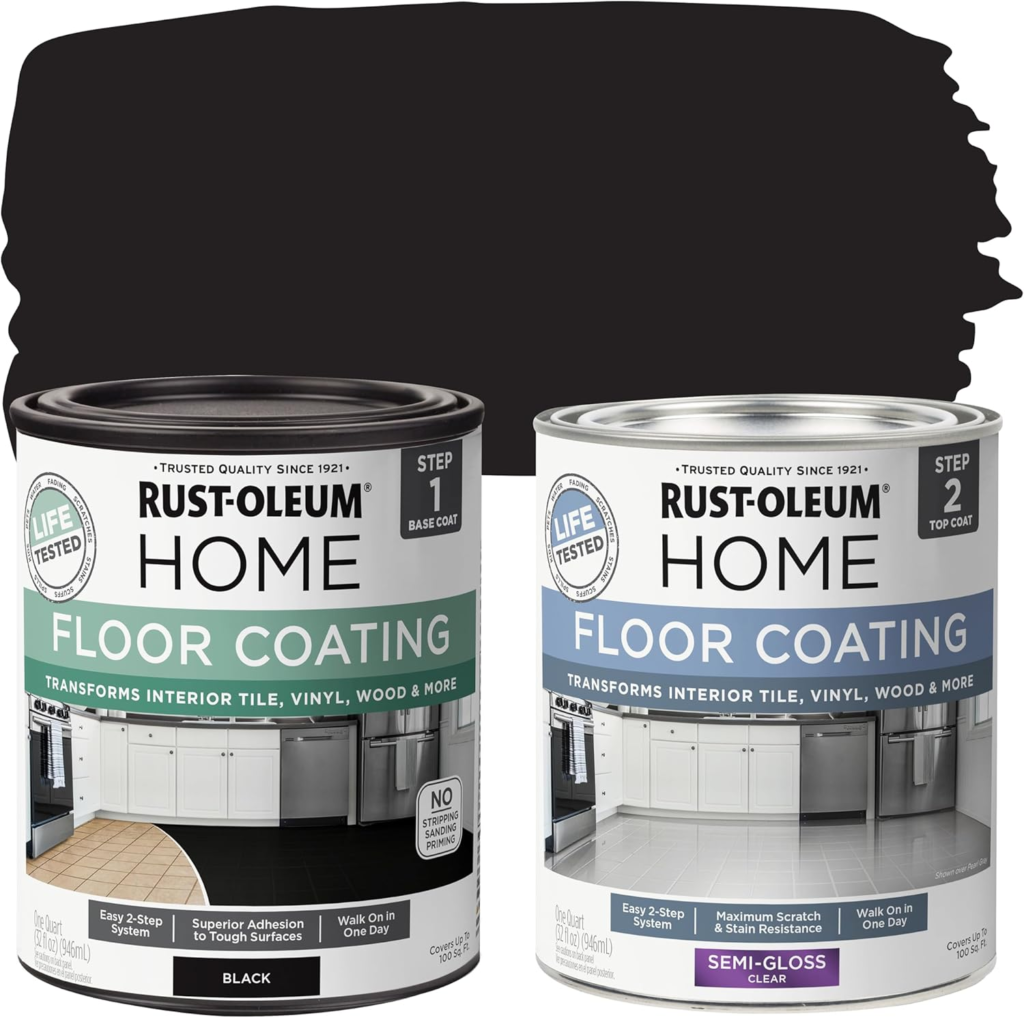
Rust-Oleum 367605 Home Interior Floor Coating Kit, Semi-Gloss Black
Ideal for updating outdated flooring at a fraction of the cost of replacement and adheres without stripping, sanding or priming.
Buy Now on AmazonBest Uses for Stonington Gray
Stonington Gray is ideally suited for those spaces where a truly neutral gray is coveted—a shade untainted by excessive warmth or distraction from other hues. It thrives in modern interiors, offering a clean backdrop against which minimalist aesthetics can shine unencumbered. Furthermore, its versatility with accent colors makes it an excellent choice for creating varied aesthetic experiences across different spaces.
Best Uses for Revere Pewter
Revere Pewter exudes a warmth through its amalgamation of gray and beige, lending itself beautifully to spaces that seek coziness and tranquility. This shade complements traditional and transitional decor styles, serving as the bridge between classic motifs and contemporary expressions. Its synergy with warm neutrals and earth tones renders it perfect for crafting inviting, balanced interiors.
How to Choose Between the Two Colors
Choosing between Stonington Gray and Revere Pewter fundamentally revolves around the desired atmosphere and aesthetic of your interiors. If aiming for a cooler, more neutral aesthetic, Stonington Gray aligns with that vision, upholding a simplistic yet sophisticated backdrop.
Should the goal be to cultivate a space defined by warmth and comfort, Revere Pewter’s greige allure accomplishes this with aplomb. It creates a nurturing environment, enveloping spaces with its warm, homely charm. Evaluate the overall feel and sunlight interaction within your space to make an informed decision that satisfies your visual and emotional aspirations.
Color Palettes for Each
Stonington Gray Palette:
For those employing Stonington Gray as a foundation, consider accentuating it with trims such as bright white or off-white to maintain a modern and sleek aesthetic. Coordinating accent colors might include soft blues, vibrant yellows, or even bold blacks, further showcasing the shade’s versatility and adaptability to various interior styles.
Revere Pewter Palette:
With Revere Pewter, complement it with trim colors in warm whites or subtle tans to enhance its inherent warmth. This foundational palette can be expanded through earth tones or muted greens to achieve a cohesive, inviting look—perfect for creating spaces that resonate with warmth and harmony.
Conclusion
In conclusion, both Stonington Gray and Revere Pewter offer their distinctive qualities tailored to align with diverse design intents and personal preferences. The key differences center on their undertones and light reflectance capabilities, each bringing unique aesthetic appeals under varying lighting conditions. We encourage you to experiment with sample swatches of both colors, allowing the colors to unfold their nuances within your specific environment before committing entirely. This approach ensures a selection perfectly attuned to your interior aspirations, enriching your home’s ambiance with the desired nuance of gray.

